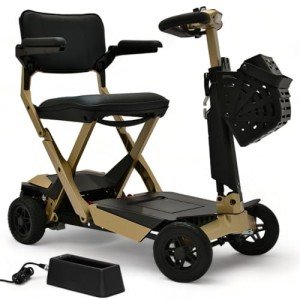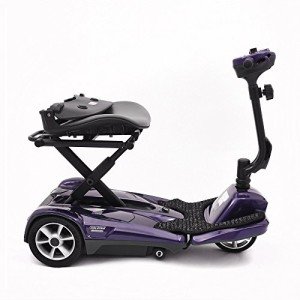As the world continues to age and accessibility becomes a more pressing concern, mobility travel scooters have emerged as a vital solution for individuals seeking independence. These compact, electric scooters offer a blend of convenience, comfort, and mobility for those with limited physical capabilities. This article explores various aspects of mobility travel scooters, providing valuable information for individuals considering this option for their travel needs.
Mobility travel scooters, often just referred to as mobility scooters, are battery-operated vehicles designed to assist individuals with mobility challenges in getting around. They come in various shapes, sizes, and configurations, making them suitable for diverse environments, ranging from indoor settings to outdoor excursions.

When considering a mobility scooter, it is crucial to be aware of the essential features that these devices offer:
| Feature | Description |
|---|---|
| Size and Weight | Mobility scooters vary in both size and weight, catering to different user needs. Lightweight models are designed for easy transport. |
| Weight Capacity | Most scooters have weight limits ranging from 250 to 500 pounds, accommodating various individuals. |
| Top Speed | Standard scooters typically have a top speed of 4-8 mph, providing a safe travel option for users. |
| Battery Life | Battery life varies, with many scooters lasting up to 15 miles or more on a single charge. |
| Turning Radius | Compact models have a tighter turning radius, making them suitable for indoor use. |
| Batteries | Commonly use sealed lead-acid or lithium-ion batteries, with some models offering battery packs that can be easily swapped for convenience. |
Selecting the right mobility scooter can seem daunting; however, the following guidelines can help simplify the decision process:
Mobility travel scooters are generally categorized into three main types:
A1: Some insurance companies may cover the cost of mobility scooters if they are deemed medically necessary. It's essential to contact your provider for specific coverage information.
A2: Most mobility scooters are designed to be weather-resistant. However, users should avoid heavy rain and deep puddles to protect the electrical components.
A3: The lifespan of a scooter battery can vary, but most batteries last approximately 18 months to 3 years, depending on usage and maintenance.
A4: Yes, most mobility scooters feature intuitive controls, and users should familiarize themselves with operation before venturing out.
A5: The cost of a mobility scooter can range from £500 to £3,500 or more, depending on the type and features.
Mobility travel scooters represent a significant advancement for individuals who require assistance getting around. They offer a blend of convenience, independence, and portability that enables users to enjoy life to the fullest. By understanding what to look for and selecting the right model, anyone can significantly enhance their mobility and ultimately their quality of life. As technology advances, mobility scooters will likely only become more accessible and practical, providing freedom to even more individuals around the world.

No Data Found!

